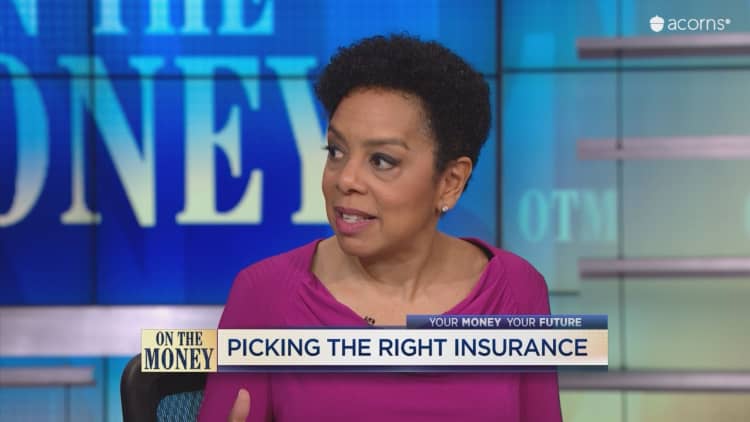
One in 4 adults will become disabled at some point before reaching retirement age, according to the Social Security Administration. Yet few people prepare for the possibility that any one ailment could cause them to miss work for an extended period of time.
A total of 20.1 million adults of employment age report a work disability, according to research published by the National Institutes of Health.
Common causes include back or neck problems, depression, anxiety or other emotional issues as well as arthritis or rheumatism.
"Most disabilities you can't even see," said Leston Welsh, the head of disability and absence management at Prudential Group Insurance.
Most disabilities you can't even see.Leston Welshhead of disability and absence management at Prudential Group Insurance
There are two basic kinds of insurance that can protect you financially if you are unable to work: Policies for short-term disability, which maternity leave is typically covered under, generally replace 60% to 70% of your base salary. Long-term disability, which ordinarily kicks in after three to six months, typically replaces 40% to 60% of your income.
"Understanding both short- and long-term disability coverage options is one of the most important ways individuals can protect themselves, their families and their finances," said Bill Smith, the president of Cigna Group Insurance.
Most workers have no disability coverage
About three-quarters, or 78%, of employers offer short-term benefits to their employees, according to a survey by the International Foundation of Employee Benefit Plans. Sixty-three percent also offer long-term disability benefits to their workers. However, only 38% of all workers take advantage of short-term disability insurance and just 33% opt for long-term insurance.
Only five states have statutorily mandated disability benefit plans that include limited coverage similar to short-term disability.
More from Invest in You:
Millions of Americans are only $400 away from hardship
How to overhaul your finances before becoming a parent
What millennials need to do now to retire rich someday
As a result, more than half of people who experienced a disabling event took more than two years to recover financially, according to a separate disability study by Cigna.
"You are not only dealing with medical bills but lost wages and income," Cigna's Smith said.
Altogether, about 50 million working adults in the U.S. don't have any disability insurance other than the basic coverage available through Social Security. But the average SSDI benefit is only about $1,200 a month, or $14,000 a year — barely above the poverty line.
Hard to qualify
In addition, the requirements to qualify are rigorous. Your condition must be so severe that it will keep you from working for 12 months or more. In addition, there is a significant lag time before the benefit kicks in – even up to two years – which means you must have other coverage or a well-padded emergency fund to bridge the gap.
For all of those reasons, "if your employer offers something, you should consider it," said Mike Stein, a senior financial analyst at Allsup, a company that helps people file and receive benefits. (Workers at or near retirement age may be offered short-term disability or long-term disability through an employer; however, long-term disability benefits could be limited.)
"Employer provider options tend to be far more reasonably priced," he said. You may also want to consider a supplemental disability insurance policy from your workplace to get the most comprehensive coverage you can.
If there is no workplace plan option available, you can get individual disability insurance through any insurance provider, although it will be more expensive, he added.
Further, consider how disability benefits will be taxed. It depends on how they were paid. Benefits are taxed if the premiums were paid by employers or by pre-tax employee dollars, but not taxed if the premiums were paid by your after-tax dollars.
This all factors into a broader financial plan, Stein said, "and that's where looping in an advisor can help."
Check out I Made $,1000 by Taking Pictures with This Easy Side Hustle via Grow with Acorns+CNBC.
Disclosure: NBCUniversal and Comcast Ventures are investors in Acorns.







